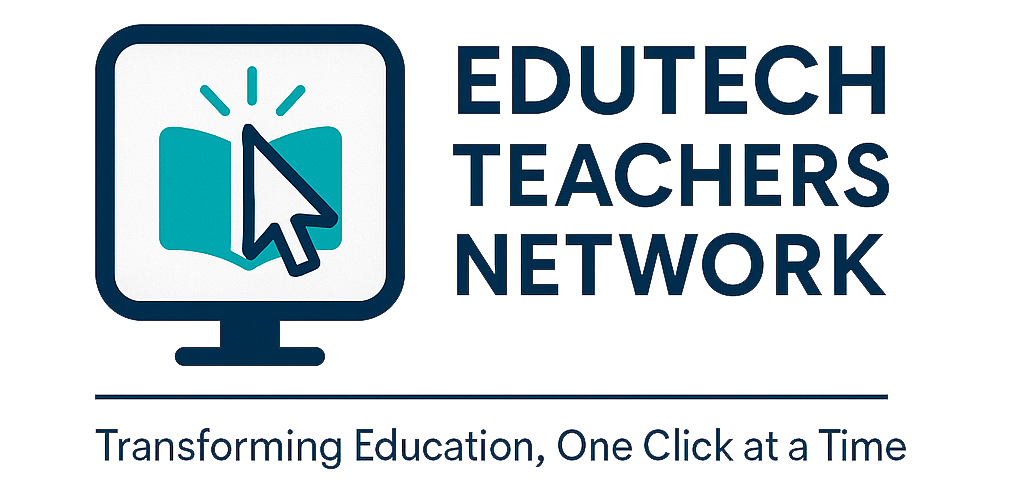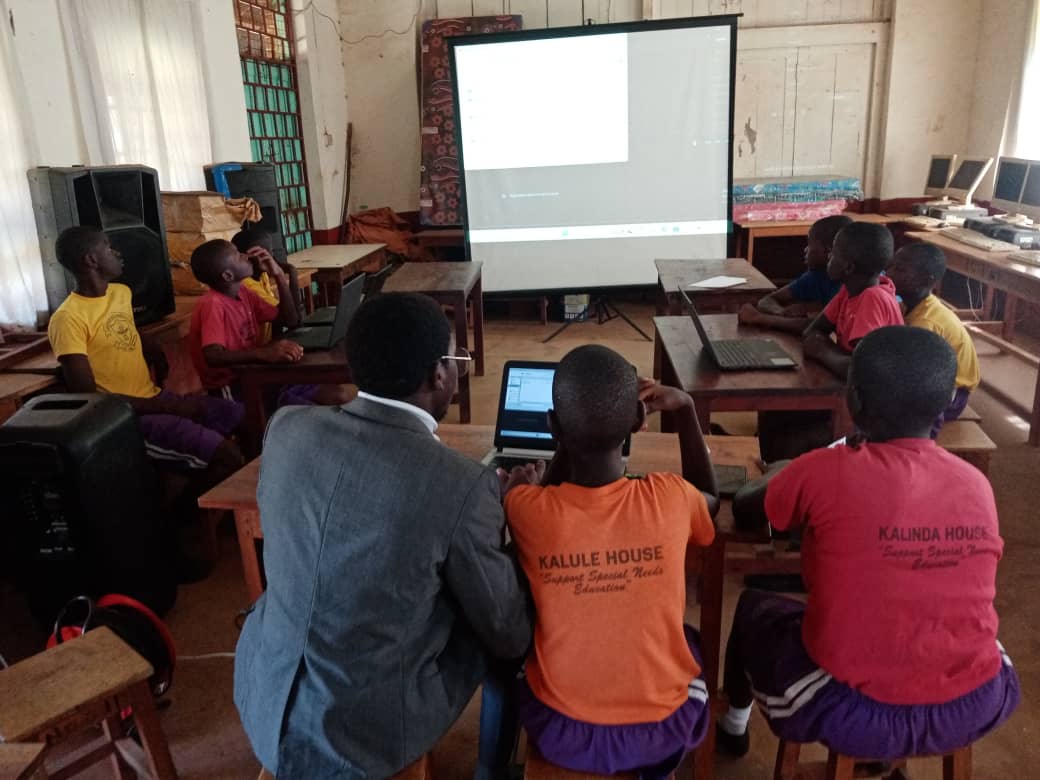Introduction
In the bustling classrooms of Uganda’s schools, where the chalkboard still reigns supreme in many rural areas, a quiet revolution is underway. Teachers like Ms. Amina, a dedicated science educator in a secondary school in Gulu, are increasingly turning to digital tools to bring abstract concepts to life. Using a simple projector and free online simulations, she transforms lessons on photosynthesis into interactive experiences that captivate her students. Yet, without clear guidelines, her enthusiasm could lead to challenges—such as unequal access to devices, cybersecurity risks, or inconsistent integration across subjects. This is where an Information and Communication Technology (ICT) policy becomes indispensable.
Across Africa, from the vibrant tech hubs of Nairobi to the resource-constrained schools in Kampala’s suburbs, the integration of ICT in education is no longer a luxury but a necessity. As governments like Uganda’s push for digital literacy through initiatives such as the National ICT Policy for Education, schools must adapt to ensure technology enhances rather than hinders learning. An ICT policy serves as a roadmap, guiding the responsible use, management, and integration of digital tools to foster efficiency, security, and equity. It addresses the “why” behind technology adoption—aligning it with educational goals—and the “how” of implementation, preventing pitfalls like misuse or underutilization.
This article explores why every school, regardless of size or location, needs a robust ICT policy. Drawing from real-world examples in Ugandan and African contexts, we’ll delve into its benefits, key components, and a step-by-step guide to creating one. Whether you’re a headteacher in a bustling urban school or a rural educator with limited resources, this policy can transform your institution into a digitally empowered hub. As we navigate this, we’ll reference practical insights from the Sharebility EduTech Course, particularly Module 3 on Developing and Implementing School ICT Policies, to provide actionable strategies tailored for teachers in Uganda and beyond.

The Need for an ICT Policy in Schools
Imagine a school in Jinja where computers gather dust in a locked lab because teachers lack training, or students in Mbarara access the internet unsupervised, exposing them to online dangers. These scenarios are all too common in African education systems, where rapid technological advancement outpaces policy development. An ICT policy is essential because it provides a structured framework to harness technology’s potential while mitigating risks.
First, an ICT policy ensures responsible and consistent integration of technology across all school processes. In Uganda, where the competency-based curriculum emphasizes practical skills, ICT can bridge gaps in traditional teaching. For instance, teachers can use tools like Google Classroom to assign projects, allowing students to collaborate beyond classroom hours. Without a policy, however, adoption is haphazard—some teachers embrace it, while others resist, leading to inequities. As highlighted in the objectives of school ICT policies, such a document establishes guidelines for teaching, learning, and administration, ensuring ethical, secure, and responsible use by all stakeholders.
Second, it addresses resource acquisition and maintenance, critical in resource-limited settings. Many African schools struggle with procuring devices; a policy outlines procurement processes that prioritize quality, cost-effectiveness, and sustainability. Consider Mr. Okello, a headteacher in a primary school in Arua, who partnered with local suppliers for refurbished computers. His school’s policy included inventory management and maintenance protocols, preventing breakdowns that could disrupt lessons. This aligns with broader goals of supporting infrastructure upgrades and fostering continuous training.
Third, an ICT policy promotes digital safety and inclusion, safeguarding users in an era of rising cyber threats. In Africa, where internet penetration is growing rapidly—reaching over 40% in Uganda by 2025—students face risks like cyberbullying or exposure to inappropriate content. A policy mandates guidelines for digital security, such as antivirus requirements and acceptable use rules. It also ensures inclusivity for learners with special needs, like providing adaptive devices for visually impaired students in Kampala’s inclusive schools.
Moreover, it aligns with national and international standards. Uganda’s Ministry of Education and Sports encourages ICT integration through policies like the Digital Agenda 2040. Schools without their own ICT framework risk non-compliance, missing out on grants or partnerships. Across Africa, countries like Kenya and Rwanda have seen educational gains from national ICT strategies; localized school policies amplify these efforts.
Finally, an ICT policy cultivates a culture of innovation. By defining roles—such as ICT patrons overseeing clubs—it encourages activities like hackathons or digital storytelling projects. In a Tanzanian school example, a policy-led initiative formed innovation clubs, boosting student engagement and problem-solving skills.
In essence, without an ICT policy, schools risk inefficiency, inequality, and insecurity. With one, they unlock technology’s transformative power, preparing students for a digital future.
Benefits of Implementing an ICT Policy
The advantages of a well-crafted ICT policy extend far beyond compliance, offering tangible improvements in educational outcomes, administrative efficiency, and community engagement. Let’s examine these benefits through a Ugandan lens, where schools often juggle limited budgets with ambitious goals.
- Enhanced Teaching and Learning Outcomes: An ICT policy ensures technology supports pedagogical goals. For example, in a secondary school in Entebbe, teachers used policy-guided tools like Khan Academy for flipped classrooms, allowing students to learn at their own pace. This led to improved test scores and higher retention rates. Policies promote models like TPACK (Technological Pedagogical Content Knowledge), ensuring tools align with content and teaching methods.
- Improved Administrative Efficiency: Digital tools streamline processes like attendance tracking or fee management. A policy outlines platforms like school management software, reducing paperwork. In a Kampala private school, implementing an inventory system per their policy cut losses from misplaced devices by 50%.
- Cost-Effective Resource Management: By prioritizing sustainable procurement—such as buying energy-efficient devices—a policy minimizes long-term costs. Schools in rural Uganda have benefited from BYOD (Bring Your Own Device) policies, leveraging students’ personal gadgets to expand access without heavy investment.
- Fostered Digital Citizenship and Safety: Policies educate on netiquette and cybersecurity. In Nigeria’s similar contexts, schools with policies reported fewer incidents of online harassment. In Uganda, this means teaching students to evaluate online sources critically, reducing misinformation risks.
- Capacity Building and Professional Development: Mandating training builds teacher confidence. Ms. Nalwoga, a teacher in Mbale, credits her school’s policy for mandatory workshops, enabling her to create interactive lessons. This ties into lifelong learning, with policies supporting clubs and mentorship.
- Inclusivity and Equity: Policies ensure ICT benefits all, including special needs learners. Using assistive technologies like screen readers, schools in Addis Ababa, Ethiopia, have integrated disabled students seamlessly—a model Ugandan schools can adopt.
- Stakeholder Engagement: Involving parents through policy communication builds support. A school in Soroti used its policy to host parent webinars on digital safety, strengthening home-school links.
Table 1: Key Benefits of ICT Policies in African Schools
| Benefit | Description | Local Example (Uganda/Africa) |
| Enhanced Learning | Integrates tech for interactive, personalized education | Flipped classrooms in Entebbe schools |
| Efficiency Gains | Streamlines admin tasks, reduces errors | Digital attendance in Kampala |
| Cost Savings | Guides sustainable procurement and maintenance | BYOD in rural Arua districts |
| Safety Promotion | Protects against cyber risks, promotes ethical use | Reduced bullying in Nigerian schools |
| Teacher Empowerment | Provides training and resources for innovation | Workshops in Mbale |
| Inclusivity | Supports special needs with adaptive tools | Screen readers in Ethiopian schools |
| Community Building | Engages parents and stakeholders | Webinars in Soroti |
These benefits demonstrate that an ICT policy is an investment in a school’s future, yielding returns in student success and institutional resilience.
Key Components of an Effective ICT Policy
A comprehensive ICT policy should cover acquisition, use, security, and governance. Drawing from the sample Sharebility Academy ICT Policy, here’s what to include:

- Preliminary Sections: Introduction, objectives (e.g., ethical use, infrastructure support), and scope (applying to all users).
- Procurement and Acquisition: Structured processes for devices and software, prioritizing educational needs and partnerships.
- Device Support and BYOD: Guidelines for staff loans via SACCOs and student personal devices, including registration and usage rules.
- Acceptable Use Policy (AUP): Rules for ethical use, prohibiting illegal activities, with consequences for violations.
- Inventory Management: Recording and monitoring resources to prevent loss.
- Maintenance and Repair: Protocols for servicing, including budgets and timelines.
- Capacity Development: Training programs and innovation clubs.
- Online Platforms and Internet Use: Management of school websites, social media, and AI tools.
- Digital Safety and Security: Guidelines for user, device, and data protection.
- Inclusive ICT for Special Needs: Assistive technologies and accessible content.
- Culture of Integration: Promoting consistent ICT use in teaching and administration.
- Roles and Responsibilities: Defining duties for administrators, ICT patrons, staff, students, and parents.
Table 2: Core Components and Their Purpose
| Component | Purpose | Example from Sample Policy |
| Procurement | Ensures quality and compliance | Needs assessment, vendor vetting |
| BYOD | Enhances access with personal devices | Device registration, educational use only |
| AUP | Defines acceptable behaviors | No unauthorized downloads |
| Maintenance | Prolongs device lifespan | Annual servicing schedules |
| Digital Safety | Protects against risks | Password policies, incident reporting |
| Roles | Clarifies accountability | ICT Patron oversees training |
These components create a holistic framework, adaptable to local contexts.
How to Create an ICT Policy: A Step-by-Step Guide
Creating an ICT policy doesn’t require experts; it involves collaboration and adaptation. Here’s a practical guide for Ugandan schools:
- Form an ICT Committee: Assemble stakeholders—headteacher, teachers, parents, and students. In a school in Lira, this committee included a tech-savvy parent for diverse input.
- Conduct a Needs Assessment: Survey current ICT use, identify gaps. Use tools like Google Forms to gather data on resources and skills.
- Research and Benchmark: Review national guidelines and sample policies, like the Sharebility Academy one. Align with Uganda’s ICT standards.
- Draft the Policy: Outline sections as above. Start with objectives, then details. Involve drafting subgroups for efficiency.
- Incorporate Inclusivity: Ensure provisions for special needs, like adaptive software.
- Review and Get Feedback: Share drafts for input, revising as needed.
- Approve and Launch: Get board approval, then train users.
- Implement and Monitor: Assign roles, track progress with annual reviews.
- Update Regularly: Revise every 2-3 years based on tech changes.
For deeper guidance, explore Module 3 of the Sharebility EduTech Course, which covers policy development in detail.
Common Challenges and Solutions:
- Limited Resources: Start small, focus on free tools.
- Resistance to Change: Offer incentives like training certificates.
- Enforcement: Use clear consequences and positive reinforcement.
By following these steps, schools can craft a policy that fits their unique needs.
Conclusion
In conclusion, an ICT policy is the cornerstone of effective technology integration in schools, ensuring safety, efficiency, and innovation. For teachers in Uganda and Africa, it’s a tool to overcome barriers and empower learners. As Ms. Amina and Mr. Okello illustrate, with a policy in place, technology becomes a force for positive change. We encourage every school to prioritize this—start today by forming a committee and benchmarking samples. By doing so, you’ll not only comply with national visions but also pave the way for a digitally inclusive future. For more on related topics, check our articles on “Roles of an ICT Patron” or “BYOD Policy for Schools” in the Policy, Advocacy & School ICT Management series. Together, let’s transform education, one policy at a time.



Leave a Reply